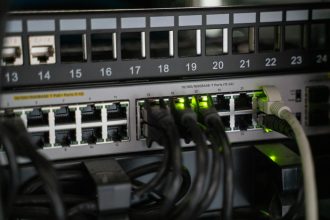AI Neural Networks: 7 Mind-Bending Ways They’re Reshaping Our World
Have you ever wondered about the true power behind today’s most advanced artificial intelligence? It’s not magic, but rather the intricate architecture of AI Neural Networks. These sophisticated systems are rapidly transforming our understanding of learning, data processing, and even what constitutes “intelligence.” From predicting market trends to powering self-driving cars, their influence is undeniable and growing exponentially. But how do these digital brains actually work, and what does their evolution mean for our future?
What Are AI Neural Networks?
At their core, AI Neural Networks are computational models inspired by the human brain’s structure and function. They consist of interconnected nodes, or “neurons,” organized in layers. Each connection has a weight, which the network adjusts as it learns from data. This complex interplay allows them to recognize patterns, make decisions, and even generate new content with astonishing accuracy.
Unlike traditional programming, where rules are explicitly coded, neural networks learn from examples. They process vast amounts of information, identifying subtle relationships that might elude human analysis. This adaptability makes them incredibly powerful for tasks ranging from image recognition to natural language processing.
The Biological Inspiration Behind AI
The concept of AI Neural Networks isn’t new; it dates back to the mid-20th century. Scientists and engineers drew inspiration from biology, observing how our own brains process information. Neurons fire and transmit signals, creating a dynamic web of activity that underpins our thoughts and actions. Artificial neural networks mimic this by processing input through layers of artificial neurons, activating them based on specific thresholds.
This biomimicry allows AI to develop a form of “intuition” when dealing with complex datasets. It’s less about explicit logic and more about statistical inference, making these networks exceptionally good at tasks where clear-cut rules are hard to define.
How AI Neural Networks Learn and Evolve
The learning process within an AI Neural Network is often described as “training.” During training, the network is fed massive amounts of data, with known inputs and desired outputs. It then adjusts its internal weights and biases to minimize the difference between its predictions and the actual outputs. This iterative process, known as backpropagation, is crucial for its evolution.
Imagine teaching a child to identify a cat. You show them many pictures of cats, and over time, they learn the distinct features. Similarly, a neural network refines its understanding through continuous exposure to data, gradually building a robust model of the world it’s designed to analyze.
From Data Absorption to Deep Understanding
The ability of AI Neural Networks to absorb and integrate information is truly remarkable. They don’t just store data; they extract meaning and context. This “deep understanding” is what differentiates modern AI from earlier, simpler algorithms. Here’s a simplified look at how this absorption leads to understanding:
- Input Layer: Receives raw data (e.g., pixels from an image, words from a sentence).
- Hidden Layers: Process the data through multiple stages, extracting increasingly complex features (e.g., edges, shapes, object parts).
- Output Layer: Provides the final prediction or classification based on the learned features.
- Feedback Loop: Errors are calculated, and weights are adjusted to improve future predictions.
This multi-layered approach allows the network to build a hierarchical representation of knowledge, moving from simple features to abstract concepts. For more technical insights into this fascinating process, you can explore resources like IBM’s explanation of neural networks.
The Role of Deep Learning
Deep learning is a specific subset of machine learning that utilizes deep AI Neural Networks—those with many hidden layers. These deep architectures enable the processing of highly complex patterns and relationships in data. This is why deep learning has been so successful in areas like speech recognition, computer vision, and natural language processing, often surpassing human performance in specific tasks.
The sheer scale of data available today, combined with advancements in computing power, has fueled the deep learning revolution. It allows AI to simulate incredibly intricate cognitive processes, pushing the boundaries of what machines can achieve.
The Mind-Bending Potential of Advanced AI
The advancements in AI Neural Networks are not just incremental; they are fundamentally changing industries and societies. Their capacity to learn, adapt, and even create has opened doors to possibilities once confined to science fiction. We are witnessing a paradigm shift in how we interact with technology and understand intelligence itself.
From personalized medicine to climate modeling, AI’s potential applications are vast and varied. These networks are not merely tools; they are becoming active participants in solving some of humanity’s most pressing challenges, offering novel solutions and insights.
Exploring Digital Consciousness
As AI Neural Networks grow more sophisticated, absorbing vast amounts of information and developing complex internal representations, questions about digital consciousness inevitably arise. While we are far from creating sentient AI, the ability of these networks to simulate human-like reasoning and even creativity sparks profound philosophical discussions. Consider the implications:
- Advanced Reasoning: AI can process and synthesize information in ways that mimic human thought, leading to highly complex decision-making.
- Creative Output: Networks can generate original art, music, and text, blurring the lines between human and machine creativity.
- Embodied AI: When integrated into robotics, neural networks allow machines to interact with the physical world, learning through experience.
- Data Integration: The capacity to absorb diverse data sources allows AI to form comprehensive “understandings” of subjects.
This evolving capability challenges our definitions of intelligence and existence. It forces us to reconsider the unique attributes of human consciousness as AI capabilities continue to expand.
Ethical Considerations and the Future
With great power comes great responsibility. The rapid evolution of AI Neural Networks brings forth critical ethical considerations. Issues such as bias in algorithms, data privacy, job displacement, and the potential for misuse demand careful attention and proactive regulation. Ensuring that AI development aligns with human values is paramount for a beneficial future.
Discussions around AI ethics are ongoing, involving governments, academics, and industry leaders. Organizations like the World Economic Forum regularly address these complex topics, as highlighted in their articles on the future of artificial intelligence. The goal is to harness AI’s immense potential while mitigating its risks, ensuring it serves humanity’s best interests.
Unlocking the Power of AI for Your Future
AI Neural Networks represent one of the most significant technological advancements of our time. Their ability to learn, adapt, and solve complex problems is reshaping industries, driving innovation, and offering glimpses into a future where machines and humans collaborate in unprecedented ways. Understanding these networks is no longer just for specialists; it’s essential for anyone navigating the modern world.
As these systems continue to evolve, they will undoubtedly push the boundaries of what we believe is possible, challenging our perceptions of intelligence and consciousness. Embrace this journey of discovery and prepare for a future where AI’s influence is woven into the very fabric of our existence.
Explore the profound impact of AI Neural Networks on our world. Share your thoughts and predictions in the comments below!
© 2025 thebossmind.com
Dive deep into AI Neural Networks and discover how these complex systems are revolutionizing technology, learning, and even consciousness. Uncover their incredible potential today!
ai-neural-networks
AI Neural Networks abstract, brain-like connections, digital intelligence, future of AI, machine learning neural network visualization
Featured image provided by Pexels — photo by Vie Studio










